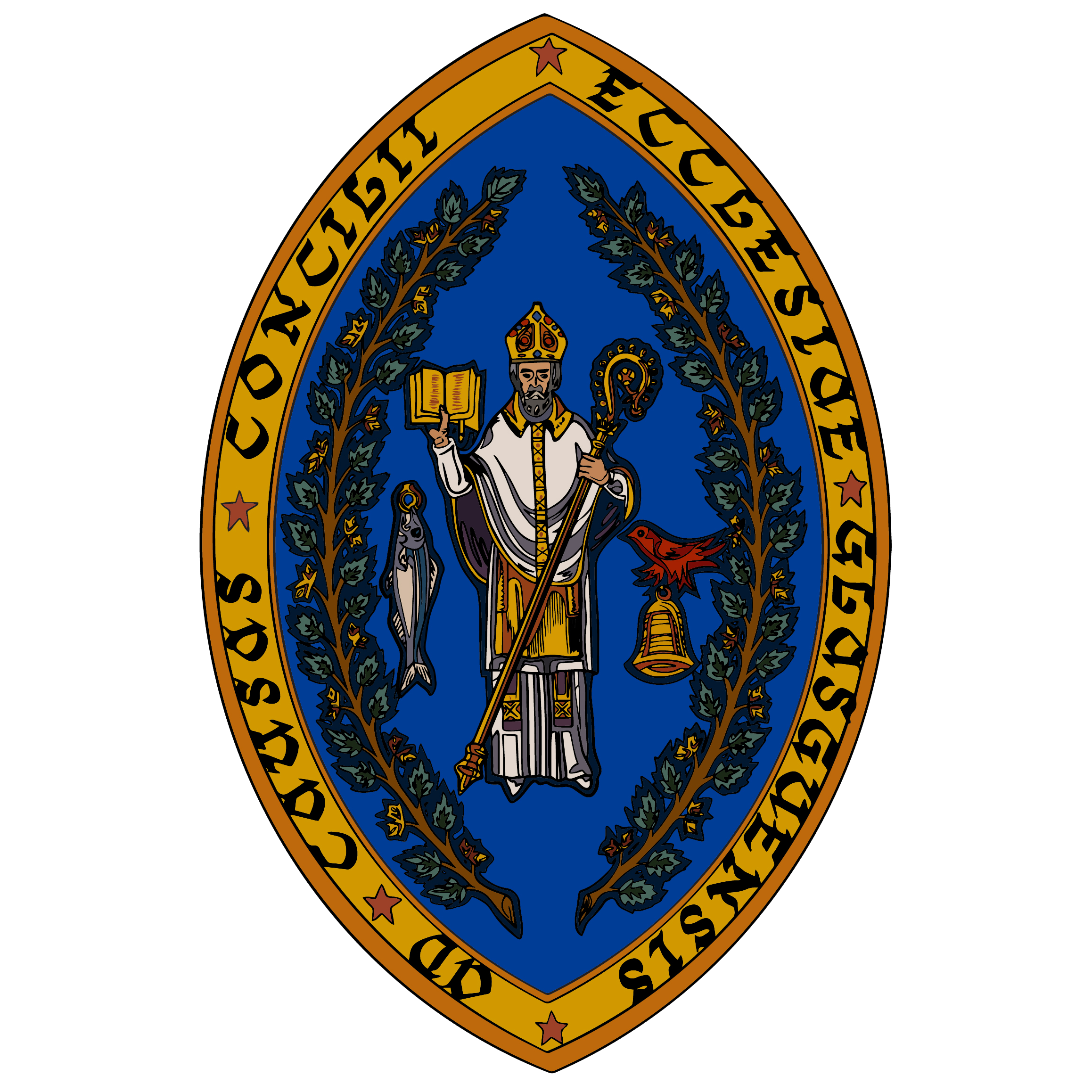
Medieval Catholic Origins
Erected between AD 1136 and 1484, Glasgow Cathedral is now Scotland’s largest place of worship. Its history reflects contrasting Christian identities. The site was an ancient pilgrimage destination containing the tomb of the 6th-century Celtic missionary to Strathclyde, St Kentigern (or Mungo). This gave access to the special grace of a saint close to God and whose remains emitted the breath of the Holy Spirit, making the place ‘holy.’
The Cathedral as a Symbol of Salvation
The uplifting Gothic architecture projects the way to the safe haven of salvation. The welcome portal is the nave. This is the spiritual rescue ship bringing pilgrims to Jerusalem in the East. The soaring arches represent the gospel from heaven reaching down to earth offering liberation from corruption, chaos and mortality to beauty, order, and immortality through the sacrificial death of Christ. In the medieval Catholic Church, this mystery, drama, and miracle was reflected in the Roman Latin Mass, dispensing grace from the High Altar with the Eucharistic sacrament.
Protestant Reformation Change of Direction
Following Scottish exit from the Church of Rome in 1560, Glasgow Cathedral worship, ministry, and governance changed permanently in line with Reformation principles. These included Christ alone, faith alone, Scripture alone, and two sacraments only. This led to radical resetting from doing to receiving, human merit to grace of God, seeing to hearing, altar to pulpit, sacrament to preaching, unmarried priest to married minister, mother church to divine Covenant, prayer invoking Mary and the saints as intercessors to prayer directly addressing the Deity only, elitist Latin Vulgate to open English Bible for all, and Latin psalms chanted by monks to psalms in English sung by the congregation. ‘Pure worship’ was confined to preaching, two sacraments, prayer to the Persons of the Trinity, and sung praise. This refocussing underlay the new Scottish church service manual derived from Geneva: the Book of Common Order. It is still the basis of modern worship here.
At Communion or the ‘Sacrament’ (reduced to four times a year to heighten value), everyone now sat at tables and received both bread and wine. These elements represented real nourishment of body and soul as well as reassurance through Christ’s spiritual presence and his promises as the Word of God. As in the Church of Scotland, modern Communion in the Cathedral is open to believers of any denomination.
Post-Reformation Changes in Appearance
Since Reformed Churches followed only scriptural practices and commandments, there were noticeable consequences, like the removal of all images and statues of the three divine Persons and saints, crucifixes, side chapels, relics, fabrics, and elaborate clerical vestments. Scripture, doctrine, and faith mattered most. Dramatic religious symbolism and art lost importance. The name ‘Cathedral’ gave way to ‘the High Kirk,’ referring to the city’s High St. The massive building was subdivided into three different parish churches to meet new needs in Glasgow. The idea was that a stone building was not as holy or sacred as the human hearts in which the Holy Spirit truly dwells.
New Forms of Ministry and Church Management
In the Reformed Church of Scotland there was controversy over whether the Kirk should be governed by monarch, bishops, and synods, or by ministers, elders, and presbyteries devoid of individualis hierarchy. In 1638 the Kirk’s General Assembly meeting at Glasgow Cathedral voted for presbyterian church government in the entire Scottish Church. It also declined Church of England-style worship and ritual favoured by monarch and bishops, and restored plainer Reformed services. And in 1647 the Kirk adopted the Westminster Confession of Faith as its main explanation of doctrine and practice. These choices became definitive in 1690 and are still in place today. This means that the Cathedral is not in a diocese; it just refers to the building. It does not have a bishop, dean, canon, priest, or vicar. Instead, its officials (presbyters) are ordained ministers and ordained elders of equal rank. These are subject to the higher corporate authority of a regional presbytery and the annual national General Assembly.
Readjustments of the Modern Cathedral
In 1835, the High Kirk of Glasgow reverted to being one parish – renamed ‘St Mungo’s.’ The building became a single sanctuary again. The word ‘cathedral’ reappeared. There was also interior redesign and restoration: the typically Old Reformed central high pulpit gave way to a more balanced lay out of pulpit and Communion table. There was a turn to more ceremony. An organ was installed along with a robed choir to enhance the musical experience. The clear windows were reglazed and stained by German craftsmen, but these Victorian windows were replaced in the 20th century. Use of the Apostles’ Creed and the Nicene Creed was reintroduced as was more awareness of the ‘Christian Year.’
These developments reflected the openness of modern Scottish Reformed and Presbyterian church services to usages of other denominations in an ecumenical spirit ad that of continuing reformation.
